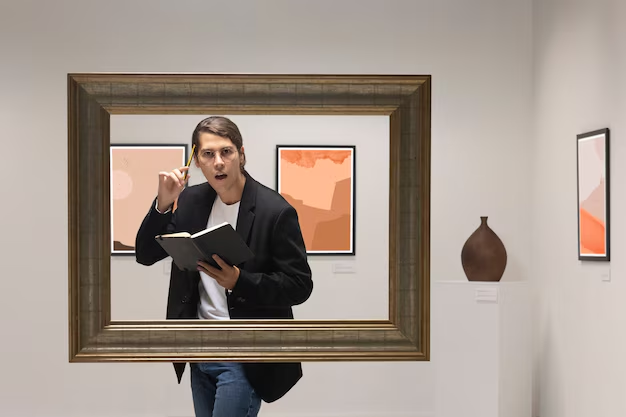Art galleries serve as portals to the creative minds of artists, offering a glimpse into their thoughts, emotions, and interpretations of the world around us. These spaces are not merely repositories of artwork but also cultural hubs that foster appreciation, dialogue, and understanding of different artistic expressions. From classic masterpieces to contemporary installations, art galleries showcase a diverse range of works that captivate, inspire, and provoke thought. In this article, we delve into the fascinating world of art gallery, exploring their significance, evolution, and impact on the art world and society at large.
Evolution and Significance of Art Galleries
The concept of art galleries dates back centuries, with early examples found in ancient civilizations such as Egypt, Greece, and Rome. However, it was during the Renaissance period in Europe that the modern notion of art galleries began to take shape. These spaces emerged as venues for displaying and selling art, attracting patrons and collectors who recognized the value of artistic expression.
Over the centuries, art galleries have evolved from private salons and academies to public institutions and commercial spaces. Today, they play a vital role in the art ecosystem, serving as platforms for artists to showcase their works, connect with audiences, and engage in critical dialogue. Art galleries also contribute to the cultural landscape of cities and communities, enriching public life and stimulating creativity.
Types of Art Galleries
Art galleries come in various shapes and sizes, each catering to different artistic genres, styles, and audiences. Some of the common types of art galleries include:
1. Traditional Galleries:
These galleries focus on exhibiting paintings, sculptures, and other traditional forms of visual art. They often represent established artists and showcase works that adhere to conventional artistic standards.
2. Contemporary Galleries:
Contemporary art galleries specialize in showcasing cutting-edge and experimental artworks that push the boundaries of traditional artistic practices. They feature works by emerging artists and highlight new trends and concepts in the art world.
3. Commercial Galleries:
Commercial galleries operate as businesses, representing artists, promoting their works, and facilitating sales to collectors and buyers. These galleries play a crucial role in the art market, supporting artists’ careers and sustaining the gallery ecosystem.
4. Public Galleries:
Public galleries are funded by government agencies, foundations, or institutions and are dedicated to promoting public access to art and culture. They often host exhibitions, educational programs, and community events to engage diverse audiences and foster artistic appreciation.
5. Online Galleries:
With the rise of digital technology, online galleries have emerged as virtual platforms for showcasing and selling art. These galleries offer a convenient and accessible way for artists to reach global audiences and for art lovers to discover and collect artworks online.
The Art Gallery Experience
Visiting an art gallery is more than just viewing artworks; it is a multisensory experience that engages the mind, heart, and soul. The ambiance of an art gallery, with its curated spaces, lighting, and layout, enhances the viewing experience and creates a sense of immersion in the art world. As visitors move through the gallery, they are invited to contemplate and interpret the artworks, evoking emotions, sparking conversations, and prompting introspection.
Art galleries also provide opportunities for education and enrichment through guided tours, artist talks, workshops, and interactive programs. These initiatives help demystify art, making it accessible and engaging for audiences of all ages and backgrounds. By participating in gallery events and activities, visitors gain a deeper appreciation for art and develop a connection with the creative process.
Impact of Art Galleries on Artists and Society
Art galleries play a pivotal role in shaping the careers of artists and influencing the cultural landscape of society. For artists, galleries provide visibility, credibility, and networking opportunities that can elevate their profiles and expand their reach. By showcasing their works in galleries, artists gain exposure to collectors, curators, critics, and fellow artists, fostering collaboration, recognition, and growth in their artistic practice.
In addition, art galleries contribute to cultural enrichment and social cohesion by bringing people together to celebrate art and creativity. They serve as inclusive spaces that welcome diverse voices, perspectives, and experiences, fostering dialogue, empathy, and understanding among individuals. Through exhibitions, events, and outreach programs, art galleries promote cultural diversity, artistic excellence, and social change, making a positive impact on communities and society as a whole.
Conclusion
Art galleries are more than mere spaces to display artworks; they are vibrant hubs of creativity, dialogue, and inspiration that shape our understanding of the world and ourselves. By fostering artistic expression, promoting cultural exchange, and engaging audiences, art galleries play a crucial role in nurturing creativity, fostering connections, and enriching our lives. Whether you are a seasoned art enthusiast or a curious newcomer, exploring the world of art galleries offers a transformative journey into the realm of imagination, beauty, and meaning. So, step into a gallery, immerse yourself in the art, and let its magic unfold before your eyes.











